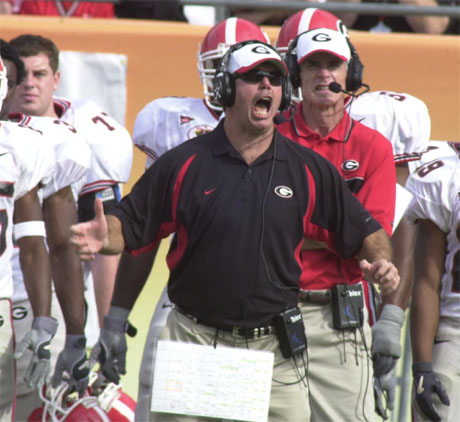One fateful day in October of 2005, I was sitting in the basement of my house in Oshkosh, Wisconsin perusing the Internet as I was wont to do in those days (and in these days). An intriguing email came into my inbox that said, “Perry, We're in need of a midwest region writer for college fantasy basketball … some pay and perks. Let me know if you are interested.” I did not know the author of the email and didn’t know there was such a thing as college fantasy basketball. I had been the Milwaukee Bucks hometown correspondent for ESPN Fantasy Basketball, so I was intrigued. ESPN didn’t pay anything other than the opportunity to grace their page. Pay and perks? Greater ships have been launched with such treasure in mind.
For the first few years of writing about college fantasy basketball, people told me that fantasy college sports would be the next big thing. The fantasy football revolution would make its way from college football to college hoops. For the first few years of writing, I actually believed this. My hopes were somewhat diminished after setting up my own fantasy college hoops league, the Big Chief Challenge (I, of course, was and am Big Chief College Basketball) and just 10 people joined (among them current CBS college hoops savant Jeff Borzello). The league has picked up a few members each year and we now boast enough teams to have a relegation system. However, the fantasy college basketball explosion has been a relative dud.
That may sound like a complaint, but it really isn’t one. Fantasy college basketball is difficult; more so than any other fantasy sport in some ways. There are an enormous amount of teams – 75 in Tier 1 (ACC, Big 10, Big 12, Big East, Pac 12, SEC), over 300 throughout Division 1 – and turnover of the top players happens on a yearly basis. Add in the fact that there is no standard way to play and college fantasy basketball has some huge hurdles to overcome. I do think it should appeal to more fantasy baseball fans since the seasons dovetail so well together and the games rely on the same sort of prospecting skills. It’s just not for everyone and that’s ok.
One of the things that sports try to do is appeal to the largest fan base possible. I guess that makes sense. I would love for millions of people to read these Manifesto columns (but I am thrilled that even you are taking a peek). However, it annoys me when these things are forced upon us. For example, a few weeks ago in the CBT Podcast, the topic came up about Marshall Henderson, the mainly offensive chucker for the Ole Miss Rebels. Troy Machir and his guest Daniel Martin were trying to shoehorn Henderson into a story that might entice the casual fan. For some reason, “enticing the casual fan” made me angry.
I think it is fine if you do not want to watch college basketball until the NCAA tournament, but please don’t tell me that the season is too long. If you don’t want to watch the November marathon or early season tournaments, don’t watch. If you don’t want to watch NBA basketball until Christmas, don’t watch. Just don’t complain to me that the season should start then. It’s like the Pearl Jam song notes, “if you hate something, don't you do it too. This is not for you!”
This mass marketing of sports reaches its pinnacle at the Super Bowl. Each year the game becomes more and more ancillary to the ads and halftime spectacle. For some reason, I am supposed to watch the ads that I try to always fast forward past. My family was on the road on Super Bowl Sunday, but the Chinese restaurant we visited was playing the game. Despite my annual threat not to watch, I did see some of the game and Beyonce strut her stuff. I want sports to be about the games on the fields and the court. The rest is not for me.
Perry Missner is a college basketball enthusiast who writes for RotoWire along with several other fantasy outlets. He welcomes your comments on Twitter at @PerryMissner or via email at [email protected]
Add The Sports Daily to your Google News Feed!
